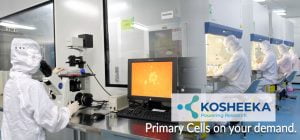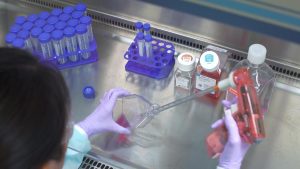The vascular endothelium, constituting the interface between organ tissues and blood, is a physical barrier and contributes to several physiological and pathological body functions, for example, thrombosis, angiogenesis, inflammation, metabolite transportation, etc. Hepatic Sinusoidal Endothelial Cells (HSECs) represent 15-20% of liver cells and form the wall of the liver sinusoids. HSECs are highly specialized endothelial cells that represent a permeable barrier as the interface between blood cells and hepatocytes & hepatic stellate cells. These cells are characterized by the fusion of the luminal and abluminal plasma membrane at other sites than cell junctions, absence of diaphragm, and lack of a basement membrane.
Function of Hepatic Sinusoidal Endothelial Cells (HSECs)
Hepatic or liver sinusoidal cells have the highest endocytosis capacity of human cells and in physiological conditions, regulate vascular tone and portal pressure during hepatic blood flow. HSECs also function in maintaining hepatic stellate cell quiescence, intrahepatic vasoconstriction, angiogenesis, and fibrosis development. In the case of liver pathology, HSECs play an important role during the initiation and progression of liver diseases, besides being a critical factor in liver regeneration, following acute liver injury. HSECs also play a role in the development and progression of hepatocellular carcinoma, in liver inflammation and infection, and in aging.

Role in Liver Infection and Inflammation
Hepatic sinusoidal endothelial cells regulate liver infection and inflammation in two ways: First, by being a physical and physiological barrier between the blood and hepatocytes, HSECs regulate the entry of circulating leucocytes into the liver tissue. As for how, HSECs express ICAM-1 and VAP-1, which allow the adhesion of leucocytes to the endothelium, and during the process of inflammation, ICAM-1 overexpresses and induces VCAM-1 and CD31 expression, leading to the trans-endothelial leucocyte migration. Second, HSECs can modulate immunological response and lymphocyte behavior.
To give evidence, HSECs do antigen presentation that leads to tolerance induction in CD8+ cells and differentiation of T cells into Treg cells. Hepatic Sinusoidal Endothelial Cells also have anti-inflammatory functions as they increase the IL-10 expression in Th1 cells via the Notch pathway. But these cells can also be adversely affecting the liver owing to their scavenging activity as Hepatic Sinusoidal Endothelial Cells can capture circulating viruses via surface lectin and lead to hepatocyte infection, as seen in the case of HepB and HepC virus infection.
Hepatic Sinusoidal Endothelial Cells play a major role in the initiation and progression of chronic liver disease. The first step is capillarization, which helps in fibrosis and precedes hepatic stellate cell and macrophage activation. The cross-talk between Hepatic Sinusoidal Endothelial Cells and stellate cells occur and the stellate quiescent stage is therefore maintained as long as HSECs are differentiated, due to VEGF. The next step is angiogenesis, which deals with the formation of new vessels from pre-existing ones and this occurs during liver fibrogenesis. Liver angiogenesis is promoted by fibrogenesis and further aggravates the fibrogenesis process.
Hepatic Sinusoidal Endothelial Cells also regulate fibrosis by angiocrine signaling that is paracrine signals by the endothelial cells to maintain organ homeostasis. These factors also regulate stem cell functions, organ regeneration, and tumorigenesis. After the acute liver injury, CXCR7-Id1 pathway activation takes place in HSECs and that stimulates hepatic angiocrine factors for liver regeneration. But interestingly, chronic liver injury causes FGFR1 activation that inhibits the CXCR7-Id1 pathway and favors a pro-fibrotic response. Therefore, in terms of injury response, differentially primed HSECs work in different ways based on divergent angiocrine signaling to regulate fibrosis and regeneration.
A lot of studies are going on to decipher the differential response of Hepatic Sinusoidal Endothelial Cells in terms of infection and inflammation. If your lab is working on HSECs, contact Kosheeka at info@kosheeka.com to procure the best quality of disease-specific Primary Cell Culture or commercial cell lines, customized as per your requirements.



